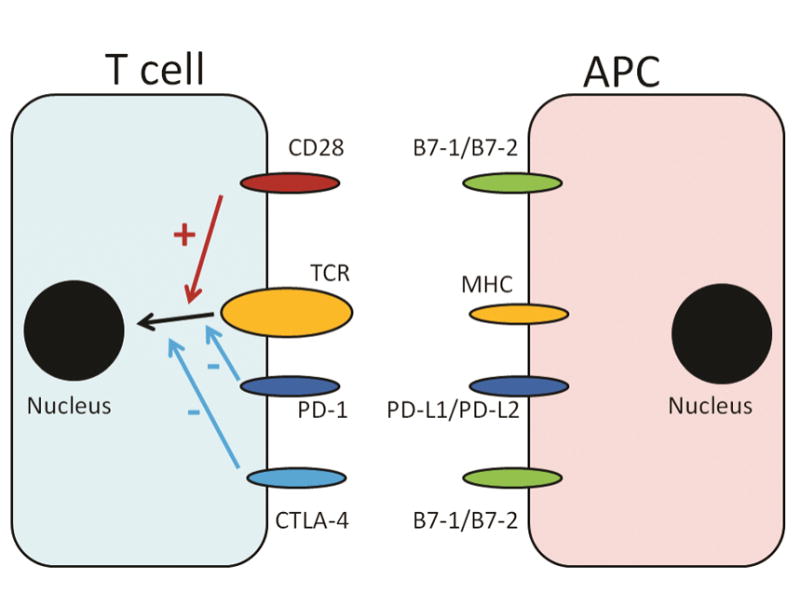Figure 1.

The two-signal model of T-cell activation. The first signal is a processed antigen presented by the MHC molecule of an APC to TCR of a T cells. This triggers TCR signaling, which is modulated by the antigen-independent co-stimulatory or co-inhibitory signals delivered by APCs. The T cell molecules CD28, PD-1, and CTLA-4 bind to B7-1/B7-2, PD-L1/PD-L2 and B7-1/B7-2, respectively. CD28, when engaged with its ligands, induces cell cycle progression, interleukin-2 production and clonal expansion. In contrast, PD-1 and CTLA-4 induces T cell tolerance when engaged with their respective ligands.
APC, antigen-presenting cells; CTLA-4, cytotoxic T-lymphocyte-associated protein 4; MHC, major histocompatibility complex; TCR, T cell receptor; PD-1, programmed death 1; PD-L1/2, programmed death-ligand 1 or 2, +, activation of the pathway; −, inhibition of the pathway.
